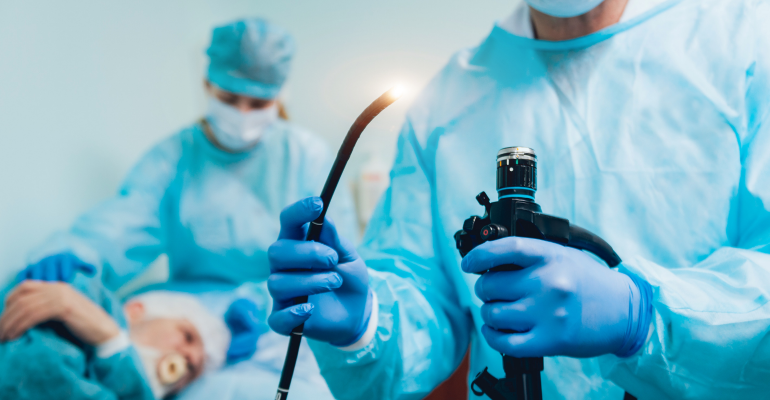Over 4.5 million people in 213 countries have been affected by COVID-19, caused by the novel severe acute respiratory syndrome coronavirus 2 (SARS-CoV-2). Confirmed a pandemic by the World Health Organization on March 11, 2020, SARS-CoV-2 is spread largely by direct touch or droplets. There have also been instances of SARS-CoV-2 being found in biopsies and stool specimens, with the possibility of fecal-oral transmission being speculated. According to the World Journal of Gastrointestinal Endoscopy, Gastrointestinal symptoms have been observed in 17.6% of COVID-19 patients, and transmission by gastrointestinal secretions is a possibility in this group.
Asymptomatic carriers or individuals with viral shedding during the incubation stage can potentially transmit the virus. As endoscopists and endoscopy workers come in close contact with patients during these aerosol-generating procedures, endoscopic procedures may offer considerable risks of transmission, even if they are not directly confirmed COVID-19 cases. This might result in an infection being transmitted inadvertently during the endoscopy. According to the basic concept, elective cases should be individually examined and reviewed, and elective non-urgent situations should be delayed. Cases considered to be of greater priority, such as those with a suspected time-sensitive diagnosis, such as cancer, should still undergo endoscopic investigation based on risk assessment since a delay might have a fat impact on patient outcomes.
The rationale underlying this approach is the need to balance the medical urgency of procedures, as a delay in the procedure may result in a delay in diagnosis and appropriate treatment, potentially leading to complications of disease or disease progression, with the risk of infection and the use of potentially limited resources. However, different organisations and societies have varied definitions of an elective case that should proceed — this reflects the fact that different locations have different COVID-19 occurrences and hence diverse capacity for doing semi-urgent endoscopy. Emergent patients are treated immediately, whereas outpatient elective cases are evaluated on a case-by-case basis and may be postponed. During this time, direct-access endoscopy is not easily accessible.
All organisations agree that all members of the endoscopy team should wear proper personal protective equipment (PPE) throughout all operations, which often includes a N95 or surgical mask, eye shield/goggles, face shield, water-resistant gown, and gloves. For all operations, the AGA and ASGE recommend using a N95 mask. ESGE, CAG, and GESA, on the other hand, exclusively utilise the N95 mask for high-risk operations. AGA also recommends using two sets of gloves, rather than one set, for all operations, but CAG and ESGE recommend using two sets of gloves exclusively for high-risk procedures. This helps in the prevention of viral organisms being transferred from PPE to clothing or the rest of the body when the PPE is removed. These discrepancies are most likely due to varying availability and practical rationing to save scarce PPE resources in the face of conflicting demands. Endoscopy personnel should be educated in appropriate dressing and removal of PPE, and stringent hand hygiene procedures should be followed.
Endoscopy rooms and equipment should be cleaned and disinfected regularly. Standardised reprocessing techniques are used to reprocess endoscopes and endoscopic equipment. Endoscopes are manually cleaned by disassembling the components and immersing the endoscope and its components in a detergent that is suitable for the endoscope. To eliminate any residue, all accessible passages are flushed and brushed. Endoscopes and their components are then disinfected at a high level using automated endoscope reprocessing equipment.
Used endoscopes and endoscopic equipment should be disinfected on-site for confirmed or suspected COVID-19 infections. Used scopes should be packed in biohazard bags, double bagged, and brought back to the endoscopy center for additional cleaning and reprocessing, which will be done separately from other endoscopic equipment. PPE should be worn by all endoscopy specialists involved in disinfecting and reprocess
The peak of the COVID-19 pandemic may have subsided, with many nations implementing techniques like social distancing to reduce SARS-CoV-2 infection rates. Now the focus is on how to safely reintroduce routine activities and services. The American Gastroenterological Association (AGA), the Digestive Health Physicians Association (DHPA), the American Society of Gastroenterology (ASGE), and the British Society of Gastroenterology (BSG) have published guidelines on the resumption of endoscopy during the COVID-19 epidemic. The frequency of COVID-19 cases in the local community and the availability of equipment and staff should dictate the timing of beginning elective surgeries.


